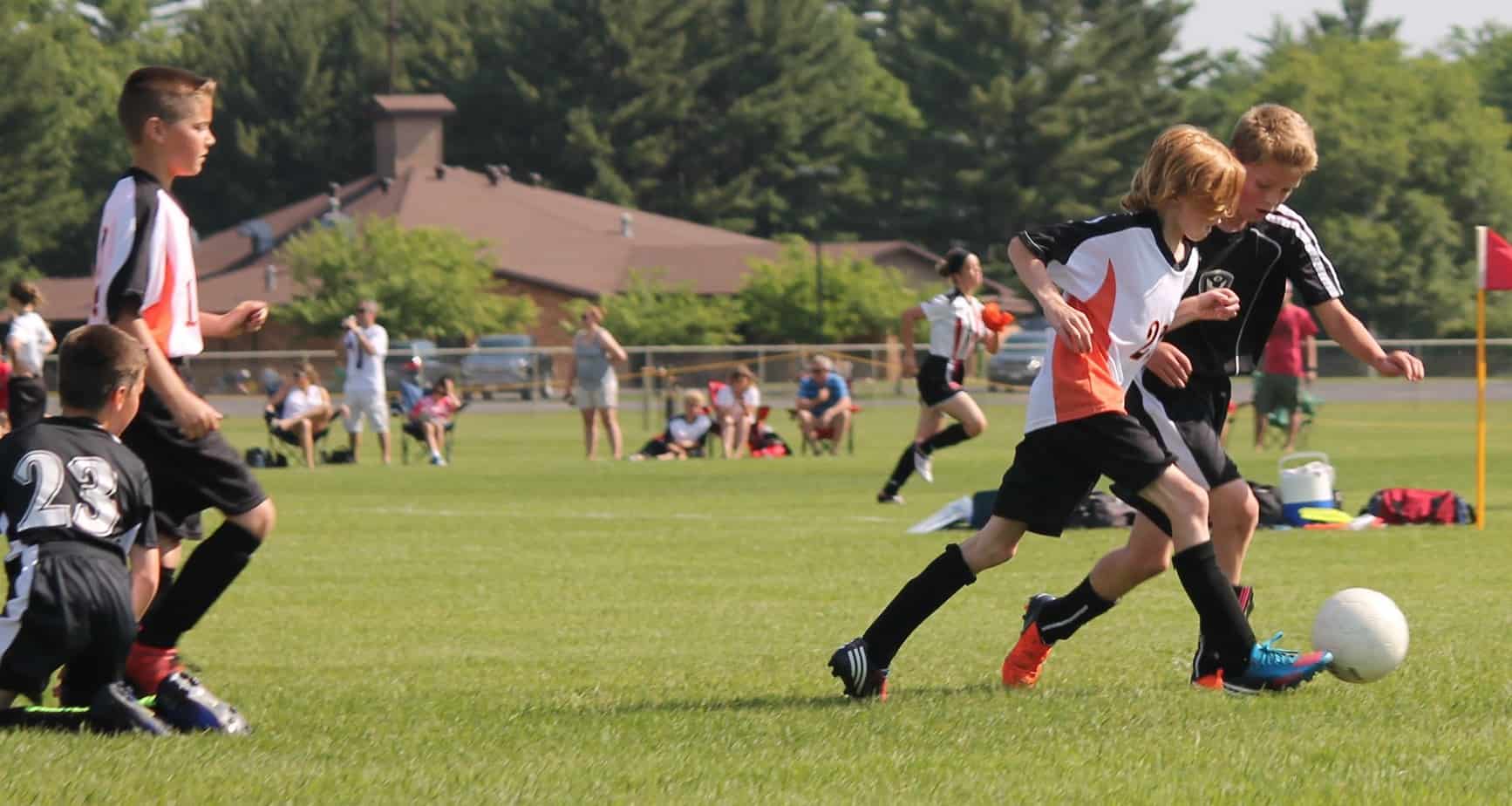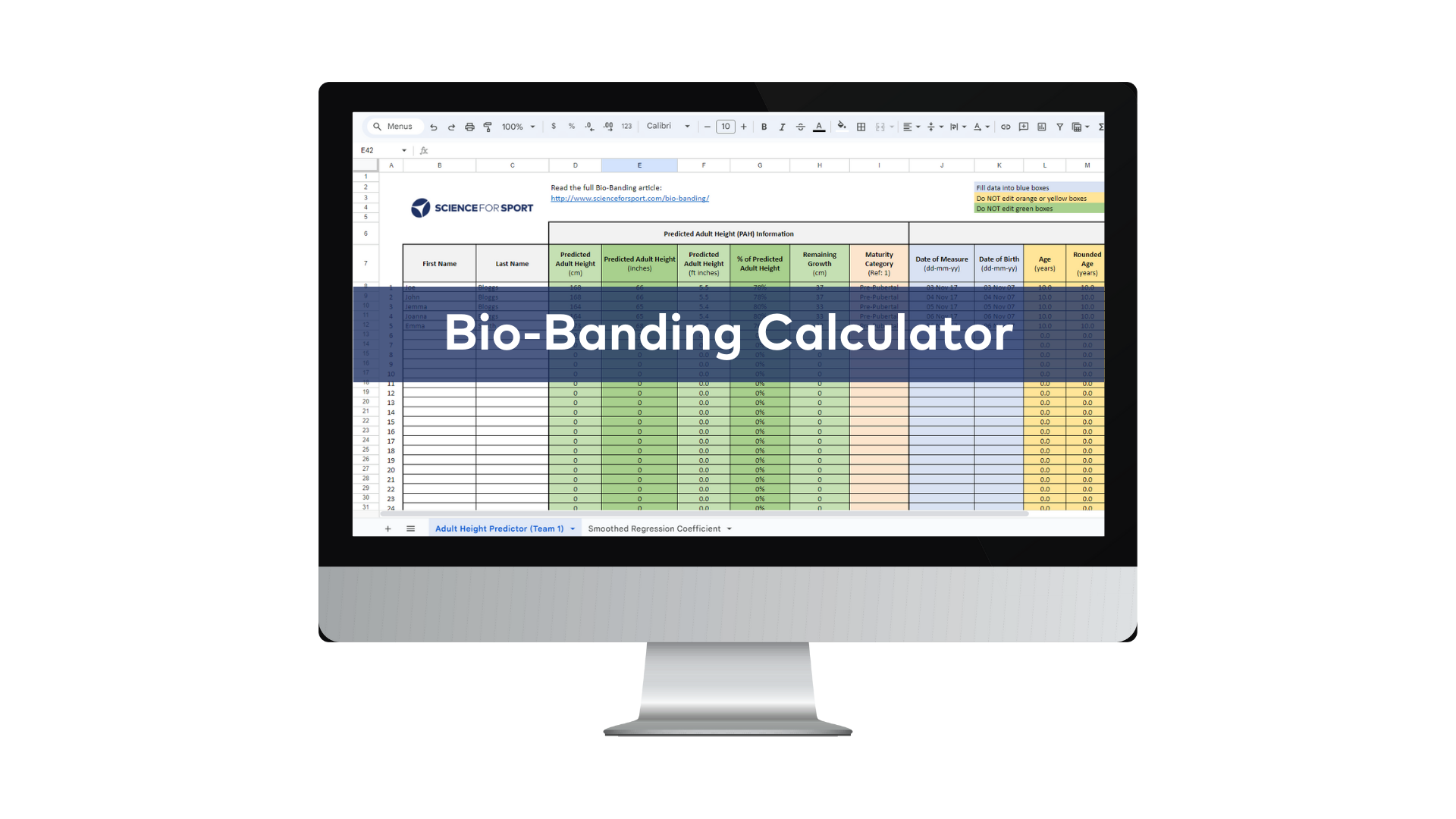Contents of Research Review
- Background & Objective
- What They Did
- What They Found
- Practical Takeaways
- Reviewer’s Comments
- About the Reviewer
Background & Objective
Bio-banding is the process where players are grouped based on maturational qualities rather than chronological age and has become a popular and controversial topic in youth sport. The theory is that bio-banding results in a greater quality of practice and potentially a reduced risk of injury. However, like many research articles that are released, they forget to question the most important part of any intervention – the athlete. Luckily, the authors of this study have you covered, as the primary aim of this one was to investigate youth players within Premier League academies and their experiences of bio-banded tournaments.
What They Did
This study collected data from 66 academy soccer players (aged 11-14) that were measured to be at 85-90% of their predicted adult stature using the Khamis-Roche method. Four academies (Southampton, Stoke, Reading, and Norwich) entered a team with squad sizes of roughly 16-17 players drawn from the U12-U15 competing teams. Players competed in three 11 vs 11 games on a full-size pitch with two 25-min halves.
Of all these players, 16 (4 by each club) were invited to participate in a series of four semi-structured focus groups. These focus groups consisted of both written and spoken elements, with each participant being asked to make a note of any positive or negative experiences associated with participating in the tournament. This was also used to support group discussions and to identify shared experiences.
What They Found
This qualitative study split the results into four unique themes in which the players described their experiences of being involved in a bio-banded tournament. The four themes were:
1. Physical Development
Players suggested that this tournament encouraged a fairer playing field, with both early- and late-maturing players believing that bio-banding encouraged a style of play that was more tactically and technically orientated. This may serve as a great way to reduce injury and ensure participation in children.
2. Technical and Tactical Development
Players reported that freedom and opportunity were greater than “normal” football games, with players feeling more able to demonstrate their technical and tactical strengths. In addition, players outlined that they altered their style of play to accommodate younger players in their “band”.
3. Psychosocial Development
Based on chronological age, younger players felt a greater sense of confidence when playing with older players and was evident in their feelings of composure on the ball. However, older players felt that there was increased pressure on them to out-perform their younger banded players and adopt a higher level of “responsibility”.
4. Overall experience
All participants in the focus groups described the tournament as a positive addition to their regular training. Early-maturing players suggested that they enjoyed the superior challenge that bio-banding provided them with. The late-maturing players also enjoyed the banded tournaments, but for different reasons. The main reason for which was empowerment, specifically with regards to the effects of maturation on performance and how they may be at a disadvantage to their chronological peers because they are less mature. However, this bio-banded opportunity allowed them a chance to perform and get recognition from the coaches and staff.
Practical Takeaways
Coaches and sports scientists should consider the benefits of bio-banding, such as increased confidence, a fairer representation of skill and ability, and the potential for players to develop tactical and technical skills. This may be a great way for coaches to use in a ‘talent identification’ scheme, so that players can really showoff what they can do. However, the frequency of bio-banded sessions is a consideration for practitioners, who must consider how much they wish to use this, with few studies providing any solid recommendations.
Based on the limited evidence regarding its long-term impact and benefits to athletes, it is necessary for you, as the Performance Digest reader, to think about where this can fit into your schedule. Sean Cumming, the lead author of this study and the “Godfather” of bio-banding, suggests that this is an additional tool for the S&C coach to use and should form part of a multi-faceted programme.
Reviewer’s Comments
“Bio-banding is a relatively new intervention in the field of strength and conditioning, yet there are already some notable issues. Although bio-banding groups players based on “physical” characteristics, it does not account for psychological maturity, which, as we know, can have numerous effects on group cohesion, enjoyment, and thus, participation. Furthermore, two athletes at 95% of their adult height can be completely different in stature, muscle mass, and therefore, performance characteristics, which can alter the dynamics of a game of football.
In terms of physicality, whilst a player may be limited when compared to their peers, an U13 player at 95% of their adult height, and an U15 player at 95% of their adult height, would have had completely different access to the tactical aspects of the game; which would still create a hypothetical proficiency barrier. This leads many to debate the validity of bio-banding as a model; with some arguing that a natural “divide” in ability is required to develop a host of skills such as perseverance, physicality, social skills, and group dynamics.
Access to information can be a great thing, and although social networking, podcasts, and/or blogs are a great way of learning, I think that bio-banding has been misinterpreted in many resources that I’ve read. For example, in my conversations with a Premier League football club, they suggested that a bio-banded tournament be used up to four times a year, with the rest of training being with peers of the same chronological age. I think a lot of people assume that this is a method used year-round, which simply isn’t the case. However, I do agree that more research needs to be conducted to determine if bio-banding is a reliable and effective way at improving performance.”
Want to learn more?
Then check these out…
Watch this video
Read this article
Listen to this podcast
The full study can be read here.



